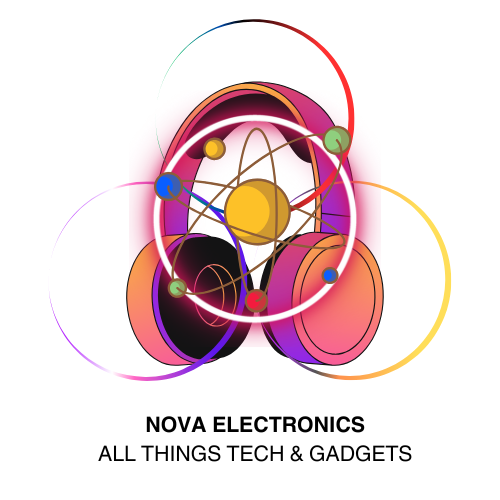
VR Ready PCs Checklist for Immersive Virtual Reality
Nova Electronics Nova ElectronicsShare
Updated on: 2025-10-25
- Pros and cons of VR ready PCs for immersive experiences
- Step-by-step guide to selecting and setting up VR ready PCs
- VR ready PCs: buyer considerations, price tiers, and examples
- Actionable wrap-up for VR ready PCs buyers
- VR ready PCs: questions and answers
- About the author: VR hardware expertise
Pros and cons of VR ready PCs for immersive experiences
VR ready PCs combine high-performance graphics, steady frame delivery, and low-latency I/O to power immersive headsets and controllers. When you choose carefully, VR-ready computers and VR-capable PCs can render realistic scenes without motion sickness. The benefits are compelling, yet the requirements are specific. Understanding the tradeoffs will help you buy once and enjoy for years.
-
Pros:
- High immersion with precise motion tracking and responsive controls.
- Broad ecosystem support, including SteamVR compatible PCs for extensive libraries.
- Upgradability across GPU, storage, and peripherals to scale fidelity over time.
- Multi-purpose performance for gaming, creation, simulation, and productivity.
-
Cons:
- Higher upfront cost versus non-VR desktops, especially at premium fidelity.
- Stricter performance targets; dropped frames can reduce comfort.
- Additional setup complexity with sensors, base stations, or inside-out tracking.
- Space and cable routing considerations to maintain safety and comfort.
If you set expectations clearly and match components to headset requirements, VR ready PCs deliver consistent experiences. The sections below detail specifications, compatibility, and a practical setup process.
Step-by-step guide to selecting and setting up VR ready PCs
Confirm the minimum specs for a VR ready PC
Start by aligning with baseline requirements. Most headsets expect a modern quad-core or better CPU, at least 16 GB of RAM for a smooth multitasking envelope, a dedicated GPU, and solid-state storage. For graphics, a contemporary midrange GPU is advisable for consistent performance and headroom. Ensure available ports match your headset’s cable or link box, typically DisplayPort or USB-C for video, plus multiple USB 3.x ports for sensors and accessories.
Many vendors list their own minimums. Treat those as entry points for functionality, not targets for comfort. When possible, exceed minimums to reduce reprojection and frame dips.
Select a GPU tier for smooth VR
GPU choice drives most of the VR experience. A practical approach is to align GPU tiers to the content you plan to run:
- Entry VR: Suitable for less demanding titles and lightweight experiences. Choose a capable midrange GPU and aim for stable frame delivery with reduced supersampling.
- Mainstream VR: Ideal for popular virtual reality gaming PCs across action, simulation, and exploration titles. Cards in this class balance cost and quality, sustaining higher render resolutions and improved antialiasing.
- High-Fidelity VR: For flight sims, racing sims, or heavily modded environments. Prioritize top-tier GPUs for the highest pixel throughput and reduced motion artifacts.
For many buyers, VR ready PCs with NVIDIA RTX 3060 represent a balanced mainstream choice. They handle a broad library of VR content at comfortable settings, especially when paired with a competent CPU and fast storage.
Balance CPU, RAM, and storage for VR workloads
VR is sensitive to CPU scheduling overhead and storage performance. Choose a modern multi-core CPU to keep tracking, physics, and background processes responsive. Plan for 16 GB of RAM at minimum and consider 32 GB if you multitask with streaming, mods, or creation tools. Use NVMe SSDs for the operating system and VR libraries to minimize loading hitches and texture pop-in.
Check SteamVR compatibility and required ports
Ensure your configuration qualifies among SteamVR compatible PCs by verifying graphics APIs and display output compatibility. Confirm the availability of a full-bandwidth DisplayPort or USB-C (DisplayPort Alt Mode) for video linkage to the headset, plus sufficient USB 3.x ports for sensors, controllers, and dongles. If your headset supports inside-out tracking, verify that your USB controller maintains reliable throughput without periodic disconnects.
Optimize drivers and Windows settings
Install the latest stable GPU drivers and the headset vendor runtime. Disable conflicting overlays when testing initial performance. Set the Windows power plan to a performance-oriented profile, and turn off unnecessary background tasks. Within headset software, start with default render resolution, then incrementally tune supersampling and motion smoothing to balance clarity and comfort.
Benchmark and troubleshoot stutter
Run a VR performance test and monitor frame timing. Look for sustained frame delivery free of spikes. If stutter appears, reduce supersampling one step, close background applications, and ensure the headset cable is seated in a full-bandwidth port. Maintain some thermal headroom with adequate case airflow to keep boost clocks consistent during longer sessions.
VR ready PCs: buyer considerations, price tiers, and examples
Selecting among VR ready PCs, VR-ready computers, or VR-capable PCs involves tradeoffs across price, fidelity, and upgradability. A clear framework helps reduce guesswork.
Best VR ready PCs under $1000: what to expect
Budgets near this range can support entry to mainstream VR with careful component selection. Expect a solid midrange GPU, a modern 6-core or better CPU, 16 GB of RAM, and a 1 TB NVMe SSD. These configurations run many VR titles comfortably at default render scales, though heavy simulation workloads may need settings tuning. Prioritize cooling and a reliable PSU to preserve stability.
- Focus on GPUs that offer strong value per watt and proven driver support.
- Ensure at least one DisplayPort for broad headset compatibility.
- Verify case clearance and airflow for future GPU upgrades.
VR ready PCs with NVIDIA RTX 3060: balanced mainstream option
Many mainstream builds center on GPUs comparable to the NVIDIA RTX 3060. This class supports a wide array of VR experiences at comfortable settings while leaving headroom for supersampling in less demanding titles. When paired with a capable CPU and 32 GB of RAM, users can stream or run background tools with minimal impact on comfort. It is a pragmatic target for cost-aware buyers who still value visual clarity.
Is it better to build or buy a VR ready PC?
Both approaches can be successful. Prebuilt systems provide predictable performance, included warranties, and factory cable management. They suit buyers who value time-to-enjoyment and service access. Building your own allows precise component choice and upgrade planning. It can reduce cost at the same performance tier and tailor acoustics, aesthetics, and airflow to your space.
Choose prebuilt if you want a streamlined path to VR with known-good parts and verified headset compatibility. Choose DIY if you want exact components, flexible upgrade paths, and hands-on control of noise, thermals, and appearance.
When you are ready to compare configurations, explore these resources:
- Storefront for current VR desktop and component availability.
- Desktops to browse performance tiers suited for VR.
- Graphics cards for GPU options across entry, mainstream, and high fidelity.
- Contact for support with compatibility, ports, or setup questions.
Actionable wrap-up for VR ready PCs buyers
VR ready PCs are most satisfying when you match components to headset demands and your preferred content. Start at or above the vendor’s minimums. Favor a GPU tier aligned to the visual fidelity you expect. Pair it with a modern multi-core CPU, 16–32 GB of RAM, and an NVMe SSD. Confirm SteamVR compatibility, ports, and room-scale logistics before purchasing. After setup, optimize drivers and render scaling to lock in smooth frame delivery. With these steps, virtual reality gaming PCs can deliver reliable comfort and clarity across a wide library of experiences.
VR ready PCs: questions and answers
What are the minimum specs for a VR ready PC?
A practical baseline includes a modern quad-core or better CPU, a capable dedicated GPU, 16 GB of RAM, and an NVMe SSD. You will also need video output compatible with your headset (commonly DisplayPort or USB-C with DisplayPort Alt Mode) and multiple USB 3.x ports for sensors and accessories. Treat vendor minimums as starting points and aim higher when possible for consistent comfort and reduced reprojection.
Is it better to build or buy a VR ready PC?
Buy prebuilt for ease, warranty coverage, and faster setup. Build your own for full control over parts, potential cost savings, and an upgrade-friendly platform. If you are new to PC assembly or short on time, a reputable prebuilt is the straightforward option. If you enjoy hardware tuning and want exact parts, DIY provides flexibility.
How do I check if a system is SteamVR compatible?
Confirm your GPU and CPU meet or exceed headset vendor recommendations. Verify that the system includes a DisplayPort or compatible USB-C video path and adequate USB 3.x ports. Install the platform runtime and, where available, use a VR readiness or performance test to validate frame delivery. If you plan on room-scale tracking, ensure you have line-of-sight mounting locations for base stations or sufficient lighting for inside-out tracking.
About the author: VR hardware expertise
Nova Electronics Nova Electronics
Nova Electronics Nova Electronics advises enthusiasts and professionals on component selection, PC performance tuning, and VR compatibility. With hands-on experience across desktops, GPUs, and headsets, the goal is to simplify decisions while preserving performance headroom. Thank you for reading; your smooth, comfortable VR experience is the priority.
